Out for 6, wrecked by seven
This week: Frustrating Sunday; Shifting timber; Out for 6, wrecked by seven; Ready for rain; Storm watching; Thunder and lightning; Winter wood supplies; Winter plantings; Looking back;
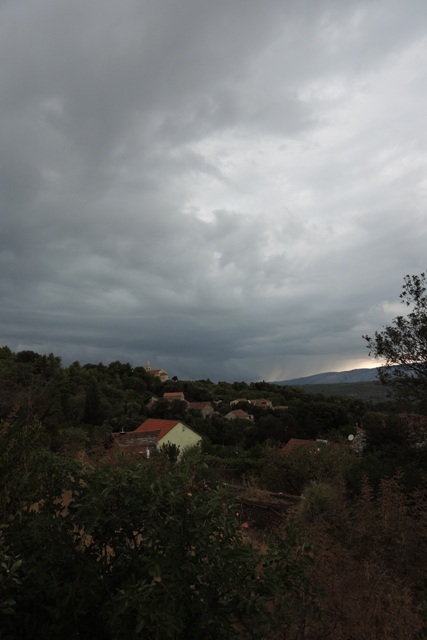
We have had some much needed rain this week, which has meant I have been able to ease off on the irrigation.
Then just before midnight last night it started raining again. With a slow rate of 15 mm per hour at the rain’s highest intensity, it has been the sort of rain that will soak in, rather than just run off the top of the parched soils.
This is our first proper rainfall since 13th May.
The 41 mm received up to Saturday afternoon (there is more rain forecast this evening as I write this at 16:50) may not be enough to save the olive crop though.
After today’s rain and the possibility of a few showers tomorrow morning, we are back to a forecast of warm autumnal sunshine for the next ten days.
The change in the weather has meant that I’ve been both preparing for the rain, doing jobs like covering the pile of white sand outside the gate, ready for when (if) the workman returns to finish the pointing in the Konoba and planting seeds.

Also I have been bringing dry wood down the hill so it was ready for splitting for the winter.
Frustrating Sunday
It was another pleasantly cool morning on Sunday, so I decided I would have another look for my missing drum of cable.
I moved a number of the boxes that I have been storing in the loft above the cottage. One advantage to having a flat roof above the summer kitchen is that it doubles as a small patio outside the loft, so somewhere “things” can be put..
I had forgotten how many boxes are actually in there. More to the point, I am unsure what is in a lot of them. When I packed them in, I had a list, but I couldn’t immediately lay hands on it.
After getting right to the end of the loft, there was no sign of the cable drum, so I am going to have to look again.
I did find a couple of things that I wasn’t looking for, for example the box of spares for the weather station. But I am no further forward with the hunt for the cable drum.
It is probably hiding in plain sight somewhere.
With three incomplete rooms and one yet to be built, it has again highlighted the problems that I have with things being packed away until I have the space to get them out.
However the abortive search reminded me to contact the architect again to see what progress has been made on my building planning application.
Shifting timber
Way back at the end of February in the early spring, I cut down a dead Cypress tree on the hill behind my home.
The small pieces I brought home at the time and burnt. The big pieces I stacked up the hill, to let them thoroughly dry during the summer.
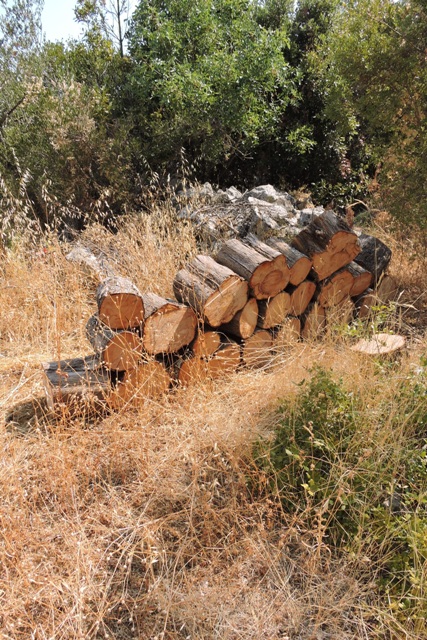
With rain forecast, and pretty much a definate for the middle to the end of the week, I could be found up the hill on Monday morning, rolling logs down to the donkey track.
From there is was four full wheelbarrow loads to get every last piece down and under cover, ready for splitting.
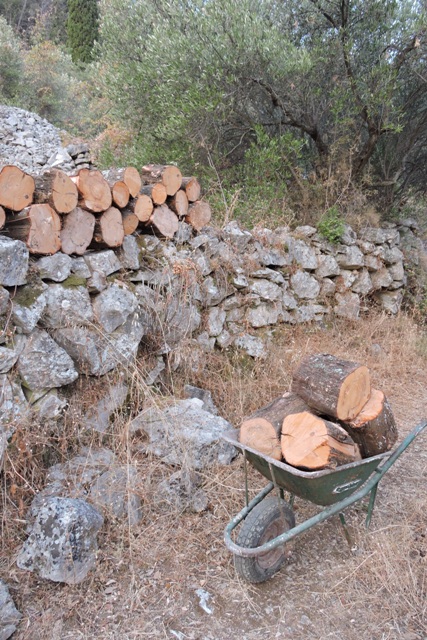
It is still warm during the day, so I started and finished the job early on Monday morning before breakfast.
Once this stack has been split into stove size pieces, they will last me for the major part of the winter I think.
I usually just need the central heating from the end of November until the end of February, so about twelve weeks of lighting the wood stove.
I usually light the fire around 16:00 each day, and dampen it down by 20:00. There are probably only half a dozen days in the winter when it is so cold as to require a fire in the morning.
Just like the heat of summer, when the term “heat” is relative, so too is cold in winter.
Living here you do get used to warmth, so when the daytime temperature is +5ºC, we think it is really, REALLY cold!
Out for 6 – wrecked by seven
There are a lot of English terms which are completely opaque to foreigners.
These are not dialect, but terms which are so local in character or specific to organisations, as to make them meaningless to outsiders.
A valued colleague was involved in establishing a lexicon a emergency service terms, from across the UK.
It ran to 7,000 words to describe the same things in every day use, but with immense variety between the different parts of the UK and different services.
There are things like the “Gobble book” – the “availability/request to work overtime” book, completely peculiar to Kingston upon Hull.
We have snickleways, ten-foots and ginnels, words to describe footpaths or cart tracks between buildings, in different parts of Yorkshire.
Then there is “completely wrecked”, a Yorkshire term meaning ‘well under the influence of alcohol’.
Regular readers know that I am acutely aware of the weather, both in aviation terms, “the actuals“, which means what you are currently experiencing, now this minute.
Then there is the “forecast” – what with a reasonable expectation of accuracy, you are likely to experience soon.
That lack of rainfall over the past four months has meant that I have been irrigating my orchards and hand watering plants since late April, so when I saw on my weather station forecast that rain was expected, I was delighted.
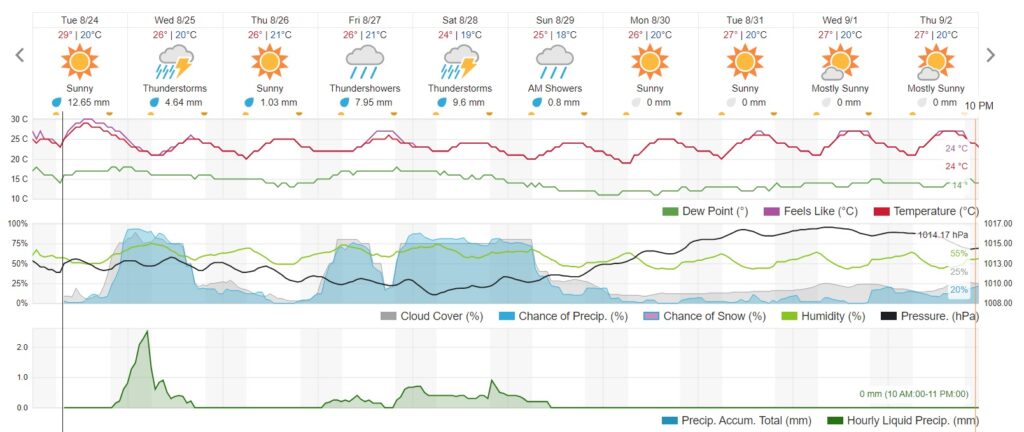
At the same time it meant I had to bring dry timber inside, before it became sodden again.
Trying to burn wet timber on a wood stove is NOT a good idea!
On Tuesday I was up at my normal time of 04:45. I was a little surprised when I heard Mario, a near neighbour, arrive at 05:30, just as dawn was breaking.
By 6am I was out with my wheelbarrow, moving large rounds of timber from where I had stacked them the previous morning, to somewhere under cover to keep them dry.
On my second wheelbarrow load, I passed the time of day with Mario. He is in his 70’s, very active and was picking Šmokva – figs – to dry for the winter he told me.
On the return pass with my empty wheelbarrow, he invited me into his Konoba for a drink. The Church clock had yet to strike 06:30.
Local people are exceedingly generous.
Equally, they can feel upset and rebuffed if one refuses an invitation. So despite my better judgement I accepted his request to join him for a “wee tipple”.
It would have been rude to refuse even at this early hour! The sun had not yet risen above the hill of Hum to the east.
The reason I was out early was that it was still cool and moving quantities of timber is warm work. But whilst a cold drink is a good idea, alcohol, even cold alcohol, is probably not…
Mario scooped two Cabernet wine glasses into a cask of Rakija and offered a three quarters full glass to me.
I should add that he doesn’t speak very much English and I know little of the Dolski dialect. I did manage to pour half of the glass back into the cask though.
Rakija is a distilled and seriously alcoholic beverage made from the remains of the grapes after red wine has been produced.
If it is possible to have a 110% proof alcohol, then Rakija would meet or exceed the target.
This particular morning I also had not had breakfast before I started work.
I had actually thought of a blog heading for this week of “Working up an appetite” before I began moving the timber rounds.
There are hundreds of Croatian dialects, all mutually non-understandable! I know a few words of Dolski but as we drank our Rakija, Mario was showing me tools used by his grandfather in the making of wine.
From the simple Tartajun, a stick used to close and lock the top of hessian sacks, to copper pans, hung from a tripod over an open fire.
These copper boilers, like Witch’s cauldrons, were used to make something with Tickvića (Courgette), although what I am not completely sure.
With 20 ml of alcohol left in my glass, I finished my Rakija, expressed my thanks and left.
I knew that I only had two more barrow loads to move and if I acted quickly, I would have the job finished before the effects of the Rakija kicked in.
I managed to get all the logs home, without spilling any on the way, but only just…..
And as we used to say, I felt “completely wrecked” by the time I had finished.
Ready for rain
Anticipating rain and thunderstorms, I was going round on Tuesday afternoon, making sure the drains were clear, doors and windows were closed and anything which shouldn’t be left outside was put away.
Another job which needed doing before the storm arrived was a battery change on my UPS (Uninterruptable Power Supply).
The mains power supply here is unstable with regular power cuts. Last week there was one which began at just before 06:00 for some 40 minutes.
This afternoon (Saturday) so far there have been five.
Because the power grid is above ground from where it comes ashore from the mainland, it is vulnerable to lightning.
When there is a power cut, I loose power to the satellite internet system, routers and the weather station, as well as everything else.
The weather station especially takes a while to come back on line, so I bought a UPS five or six years ago. Last week the batteries lasted about three minutes, instead of the 45 minutes that they last when they are new.
I had a new spare battery set on the shelf so took the unit apart. However I was not happy with what I found inside.
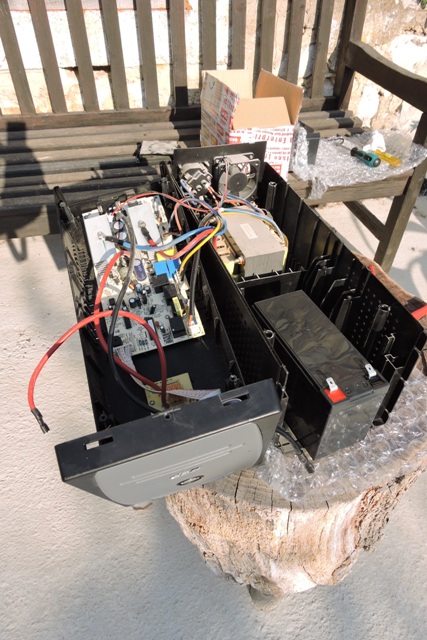
The batteries are 12 volt, sealed lead acid type, but one had failed and had begun to leak. I didn’t think that so called sealed batteries could leak?!
It had only just started and there was little mess to clear up, which is a good thing. I soon had the system back up-and-running and all my electronics back on-line.
I also had a look through my digital camera manual to refresh my memory on using the camera’s manual settings.
There have been some stunning photos on the internet of this week’s thunderstorms and lightning around the Adriatic, so I though I would be ready in case the opportunity presented itself.

I tend to use the camera mainly in fully automatic mode and I wanted to refresh my memory about how to take time exposures.
When the time came, the storm didn’t, but my camera knowledge is back up to speed again…
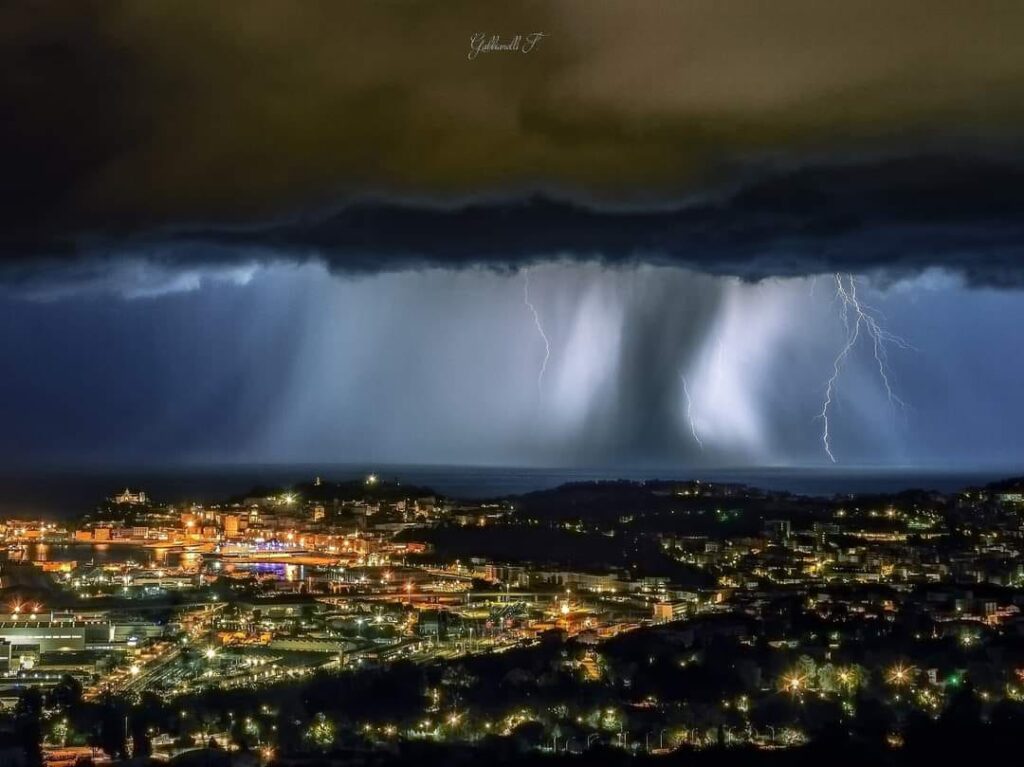
Storm watching
The quantity of rain we get varies considerably between here and nearby towns because of the hills which surround Dol on three sides.
On Wednesday morning I was watching a thunderstorm approaching from the west.
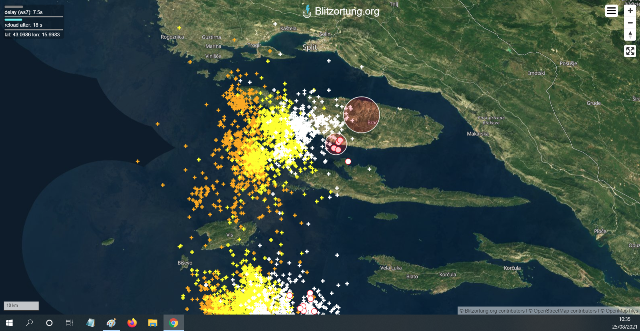
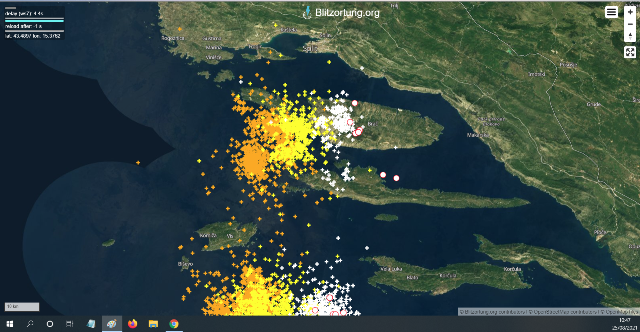
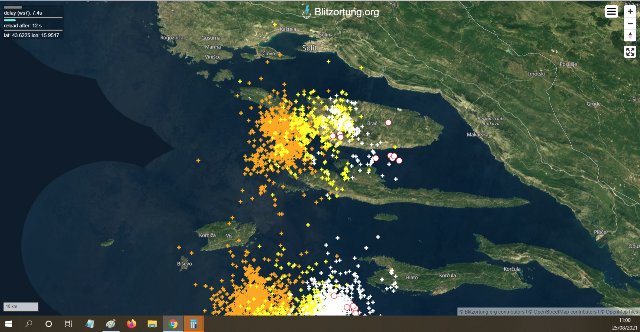
By 11:00 the storm cell had collapsed. It did bring us 4mm of rain, but just down the road in Stari Grad, to the north west, the town received 8mm. A short distance can make a huge difference.

There is a new European severe storm warning and forecasting organisation called ESTOFEX.
On Thursday night they put out a severe warning for storms across the Balkan peninsula and into eastern Europe.

We were close to the level 2 warning area and well inside the severe lightning warning area.
This weather chart shows the weather front which caused this storm warning over northern Italy and moving south east..

This was Perugia (Italy) the day before, when 110 mm of rain (that’s 110 litres per square metre) fell in an hour.
When centres of excellence like ESTOFEX issue warnings, you really want to take notice.
As it happened, in Dol we barely saw any rain at all. But just 25 km away in Split, it was a different story.
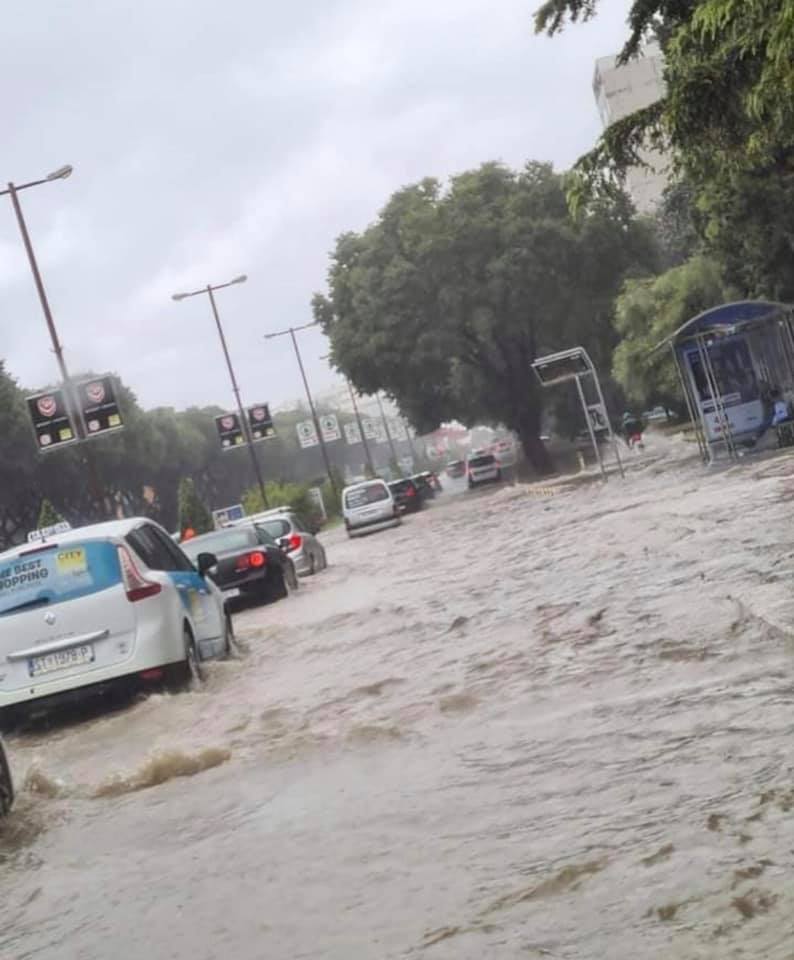
This is the main road into Split, which leads to the ferry terminal.
In the north of Croatia this same storm system produced tornados which touched the ground. This is a very rural area near the Slovenia border so the was little damage and no injuries.


It is just one extreme weather event after another this year.
Thunder and lightning
Christmas is coming, but don’t panic, you have a few more weeks to get your shopping done.
On Friday morning I watched a thunderstorm cell make its way down the Adriatic Sea from Zada. This was the storm which deluged Split.
By 09:30 the distant rumble of thunder was clearly audible, even though the active part of the storm cell was over the island of Šolta, some 15 km to the west north west.

Using the website Blitzortung – German for Lightning detector – I was following the progress of the storm in real time.
All this week I have been following the progress of storms, so I know what to expect if and when a storm reaches the island.
This website works for the whole of the world. Just use your finger on your screen or your mouse to move to your area and zoom in. You can go down to street level if you want to see where an actual lightning strike was.
Once again the effect of the high limestone ridge which runs along the spine of the island can be seen. This land mass splits the airflow and most of the storm cell passed to the south and towards Korćula.
The red circles are the lightning bursts as they happen, with a delay of just seconds. The crosses indicate the strike and they change from white through amber to orange, the older the strike is.
My weather station recorded barely 3mm of rain. This is enough to just dampen the surface of the soil.
In Croatian “thunder and lightning” is ‘munje i gromovi ‘, whereas in German it is ‘donner und blitz‘.
But then you knew that didn’t you.
Of course you did, because they are also the names of two of Santa’s Reindeer. See, we are back to Christmas again…

Winter wood supplies
With the tree now down in the yard, on Thursday afternoon my neighbour used his big hydraulic log splitter to reduce the rounds to stove size pieces.
The larger rounds were split into seven or eight 30 cm long pieces, the smaller were reduced to five or six.
It was then a short wheelbarrow trip to get them into my courtyard.
There were four barrow loads of rounds that came down the hill, and I had four barrow loads of stove size pieces on the courtyard floor by the time we had finished.
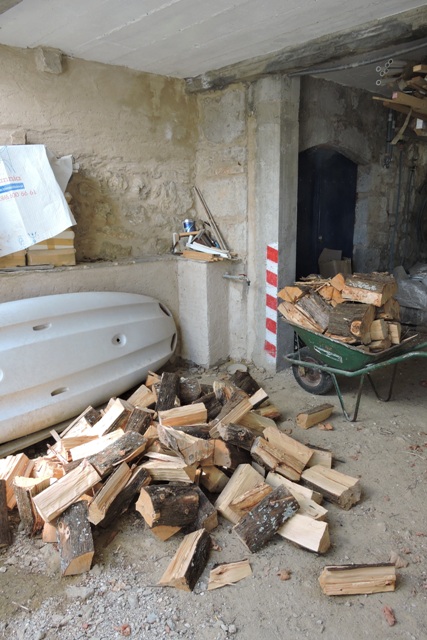
There was the delicious smell of pine oil, to the point that I filled the log basket to capacity and brought it into the dining room.
Even though I am three months away from needing to light the stove, this was just so the sweet pine fragrance fills the house.
The majority of the logs were piled up under cover in the courtyard, an easy reach for when they are needed.
Another quarter size heap has been stacked under the summer kitchen roof, even closer to the house.
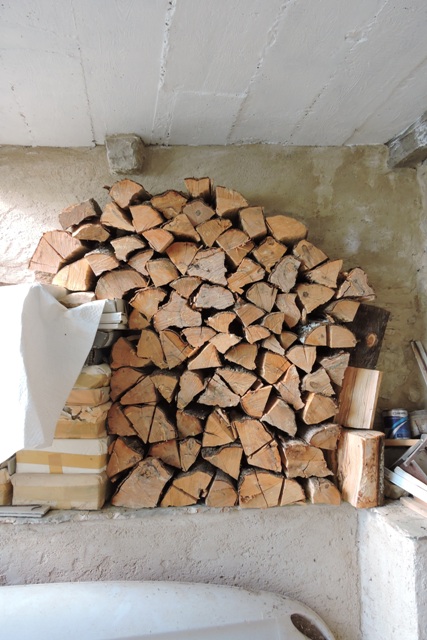
With this tree and other cut logs that I already have, I certainly have enough wood to last into January and probably to the end of the winter burning season.
Winter plantings
During the lockdowns a lot of people have tried to grow their own food crops, to a greater or lesser extent and with varying degrees of success.
I have around 100 more growing days left this year. Then the combination of a low sun and cooler weather from the end of November, will curtail the growth of most plants until February next year.
We seem to have moved past the extreme heat of summer. So I decided this week to sow some winter salad leaves and autumn tomato seeds.
On Wednesday I potted up some Styrofoam seedling pots with John Innis seed mixture then left them in the cold frame after watering, in the sunshine, to warm through.
What I am thinking of doing is planting five tomato plants outside and five in grow bags, in the greenhouse. So I also filled five cardboard tubes with soil, and placed them in individual foil trays, also in the cold frame, and then moved everything the propagator.
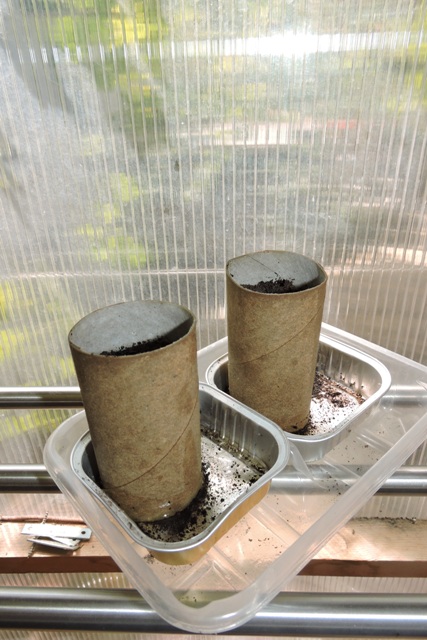
I have found that planting in cardboard tubes means that when the seedlings are transplanted outside, there is no root disturbance. The cardboard breaks down in the soil and the seedlings grow on undisturbed.
At the same time I put 10 tomato seeds into luke warm water, to soak overnight.
At sundown, I put everything in my greenhouse propagator, unheated at the moment, but with a sun warmed temperature of 28 ºC inside.
The following morning I planted everything up, still in the propagator. The seedlings will stay inside until they are large enough to move to their permanent growing positions.
Several of the tomato seeds had already started to germinate.

In the bed along side the stone wall in the top orchard, I removed the weed supressing matting and lightly forked over the soil.
With the soil prepared it was time to plant some winter salad crops.
The plastic that I laid has done a good job of preventing weed growth and killing seeds in the soil weed seed bank. However it has begun to break down because of the continuous strong UV light this summer.

I had to carefully to collect it to dispose of it safely.
The problem that I can see with planting the seedlings outside is the snails.
There are huge numbers of Gastrpods on my land. From the large edible varieties, beloved by the French, to small conical and even water snails.
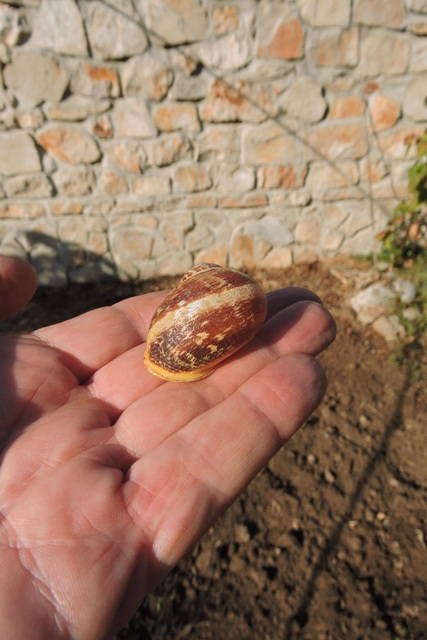
With the exception of the water snails, all the others relish fresh, young, juicy plant shoots and leaves. This is especially so in autumn as other growth slows.
I usually use sea salt crystals in a complete ring around new seedlings in the spring, so think I will have to try this again this autumn. NCG
Looking back – Week 34
This is the start of a new weekly section, with links to past issues of the blog.
2014/34 Smell maps, Contour lines, Isogonals and Puhijada

2015/34 Chasing little fish
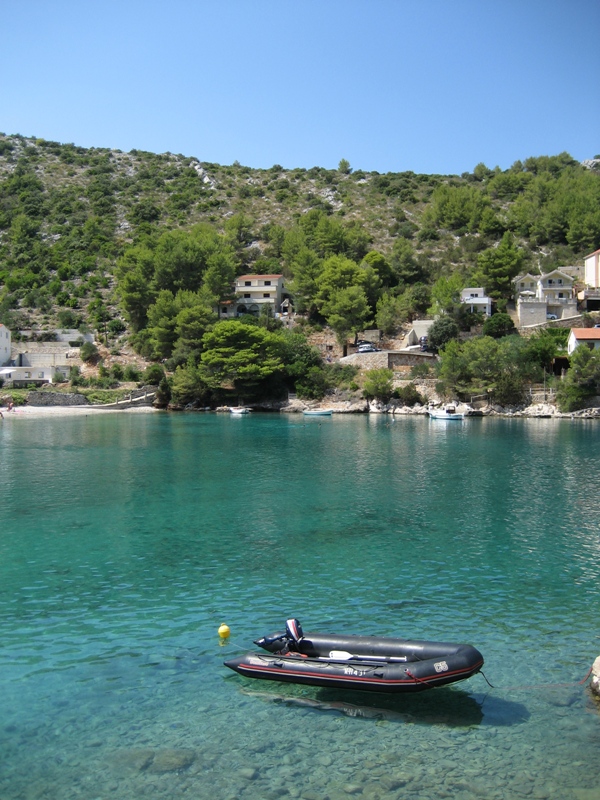
2016/34 Change is in the air
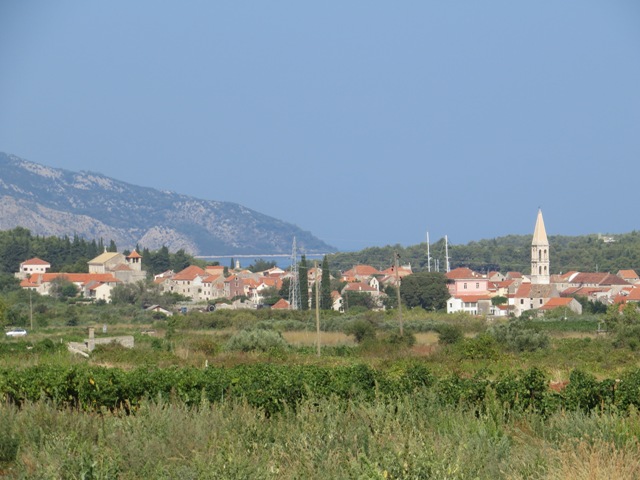
2017/34 The Angle x 0.018 x The distance = The spread
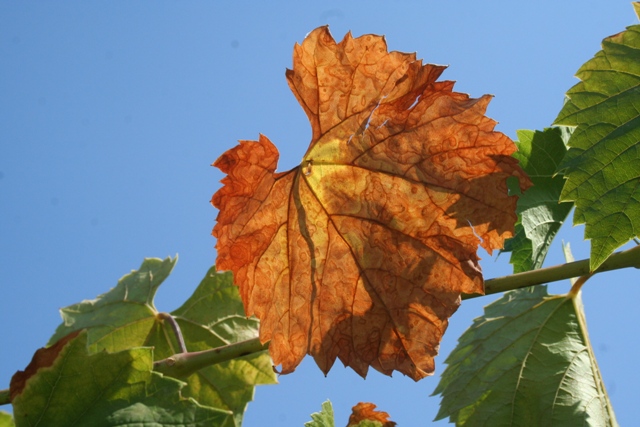
2018/34 It’s that time of year…

2019/34 Gone

2020/34 Brain Aerobics

One Response
Marcy Fletchall
This was an awesome blog. Loved the pictures by Tea but esepcially by Fransesco. They are beautiful. You are really doing an amazing job keeping fresh food on your table. I am going to take the cardboard cylinder tip and use that myself. I have cucumbers, yellow squash, and green peppers growing now, but we are going to start seeing cooler weather next month. I’m hoping to at least get a few in the freezer before too long.
Hope you are safe, and thank you again for a great blog. Marcy